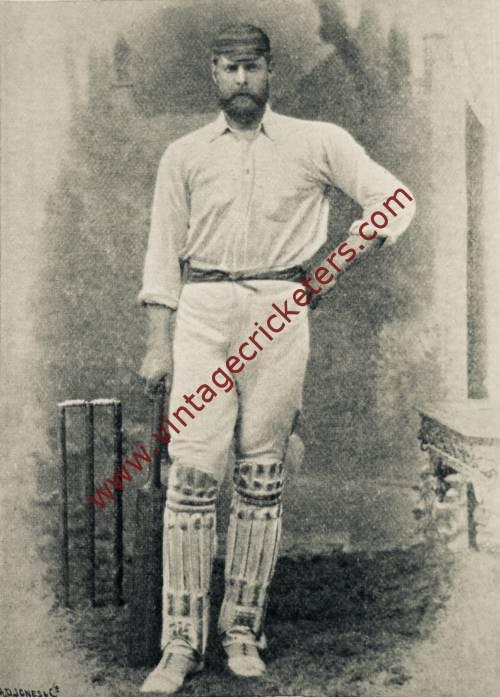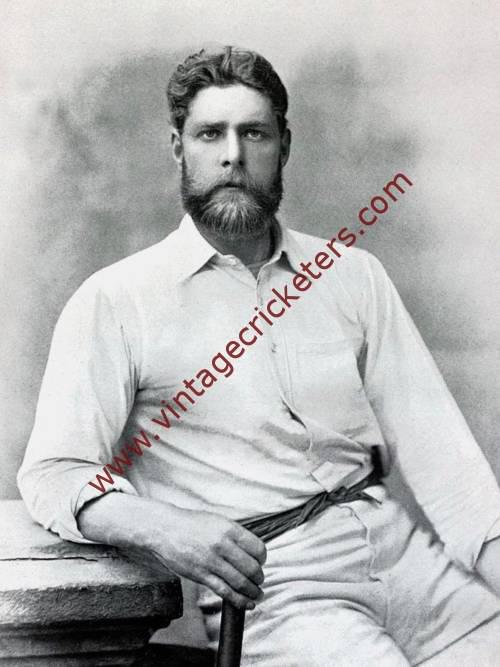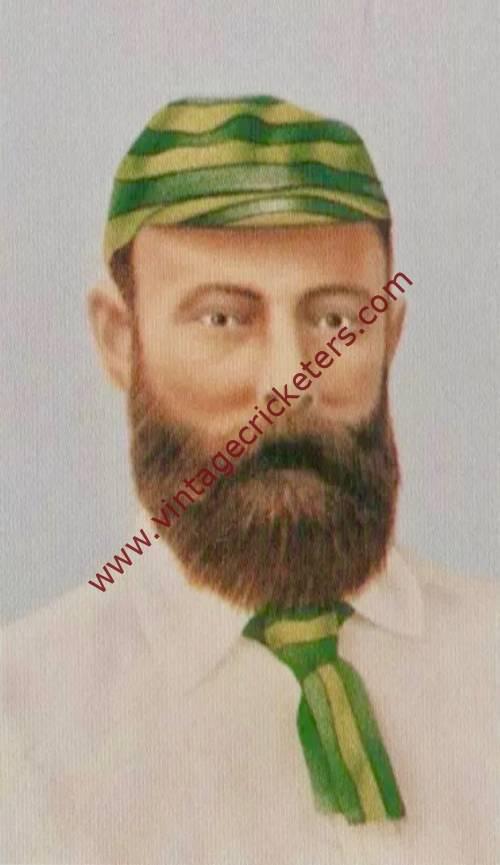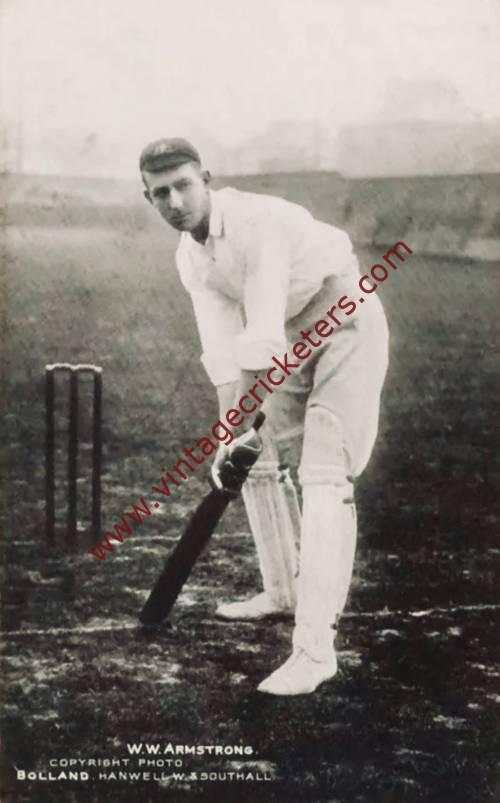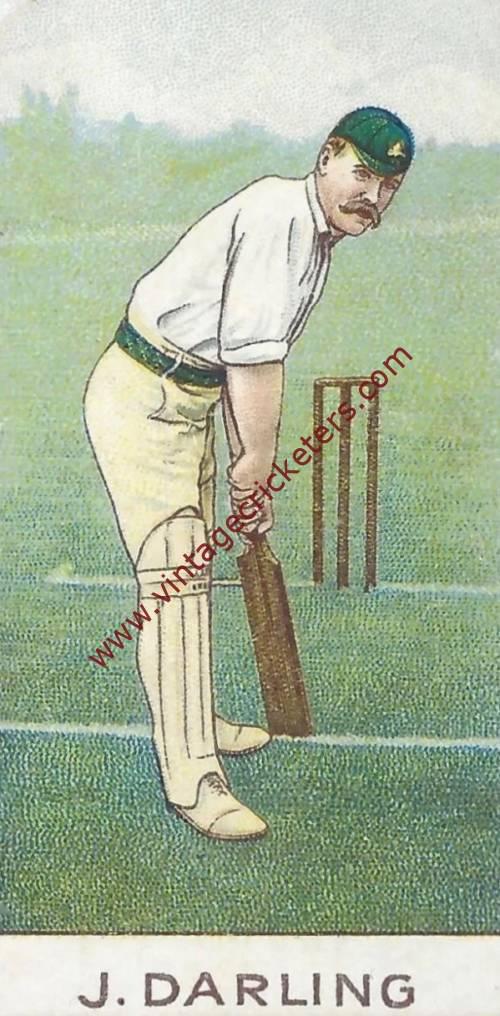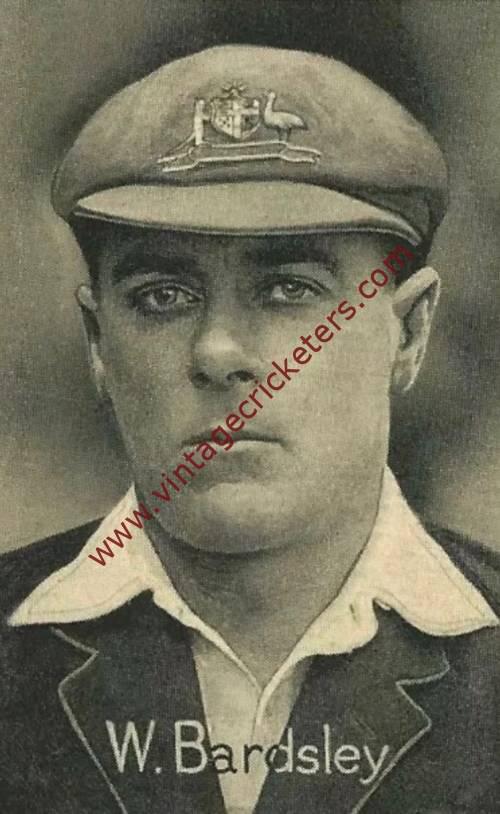Please choose your photo size from the drop down menu below.
If you wish your photo to be framed please select Yes.
Note: 16″x 20″not available in a frame.
Images can also be added to accessories. To order please follow these links
£8.95 – £49.95
Please choose your photo size from the drop down menu below.
If you wish your photo to be framed please select Yes.
Note: 16″x 20″not available in a frame.
Images can also be added to accessories. To order please follow these links
The maximum number of views of this element is reached.
Please contact the webmaster to enable unlimited views.
A giant of a man for his day, standing 6 foot 4 inches, Bathurst, New South Wales born George Bonnor was a right-handed batsman known for his big hitting, who also was an occasional right-arm medium pace bowler. In 1895 it was written of Bonnor:
“To say that he is the best hitter Australia has sent to England is of course to place G.J. Bonnor’s batting on a very high level. Still this estimate of his powers is fully justified. His performances with some of the earlier Australian Teams were remarkable, and his hitting was marked by an amount of power which has not been surpassed even by such a past master of the art as C.I. Thornton, perhaps the highest praise that could be given. Quite six foot four in height, he hits all round with equal vigour. Some of his records were quite phenomenal, e.g. in 1882 at Scarborough, against I Zingari, when he scored 122 (not out) of the last 167 runs. On that remarkable occasion he scored twenty runs off one over of four balls. A batsman with exceptional power, he was also a good field at short slip as well as in the country” [ie outfield]
Bonnor made his international debut in the first Test match played in England at The Oval in September 1880. He played a total of 17 Test matches for Australia, with a highest score of 128 against England at Sydney in March 1885, his only Test century, scoring 512 runs at an average of just over 17. Although he was exceedingly strong and made the most of it with some powerful hitting, at times his cavalier attitude led to some periods of poor scores as well. In 1884, George Bonnor became the first player in Test cricket as well as international cricket history, to be dismissed hit wicket.
When Vanity Fair published their caricature of Bonnor in 1883, they described him as “a quiet, amiable, low-voiced, comely giant, standing six feet six in his boots… gentle and good humoured, and is altogether a most excellent specimen of the Greater Briton”… “He has thrown a cricket ball 129 yards” the profile continues with some admiration. “He can bowl very fast indeed and is a very hard hitter. He is a fine runner too, and is the hundred yards Champion of New South Wales.”
Two anecdotes testify to his enormous strength. First, during the Oval Test match of 1880 between England and Australia, he was out caught for two to a ball he had hit so high that by the time GF Grace had snaffled him, waiting directly underneath it on the boundary, he and his partner had almost completed their third run. “My heart stopped beating as I went on waiting [for the ball to come],” said Grace later.
On the next tour, in 1882, Bonnor made a ₤100 wager with a disbelieving fellow passenger on the SS Assam that he could, with his throw after stepping off the ship, send a cricket ball 100 yards: he won the wager by throwing the ball 119 yards and seven inches, done without a run up. WG Grace credits Bonnor with another throw of 130 yards, but legend has it that Grace himself threw even further in their one-on-one competition.
Measured hits of his in practice included ones at Melbourne of 160 and 149 yards, and one of 147 yards at Mitcham Common in May 1880, which was carefully measured by the famed bowler James Southerton. Bonnor also reached 160 yards in actual play when, at Longsight in 1880, the Australians played the local XI and he sent Grace’s cousin, W.R. Gilbert, a long way.
In 148 first class matches, Bonnor scored 5 centuries and 18 half centuries although his highest score remained his effort at the Sydney Test, and averaged 21.23 with the bat. As a bowler he took 2 of his 12 first class wickets in Test matches, with a best performance of 3-34 and an average of a wicket at just over 39 runs a piece. He took 128 catches in first class cricket and also made one stumping when standing in behind the timbers.
| Weight | N/A |
|---|
